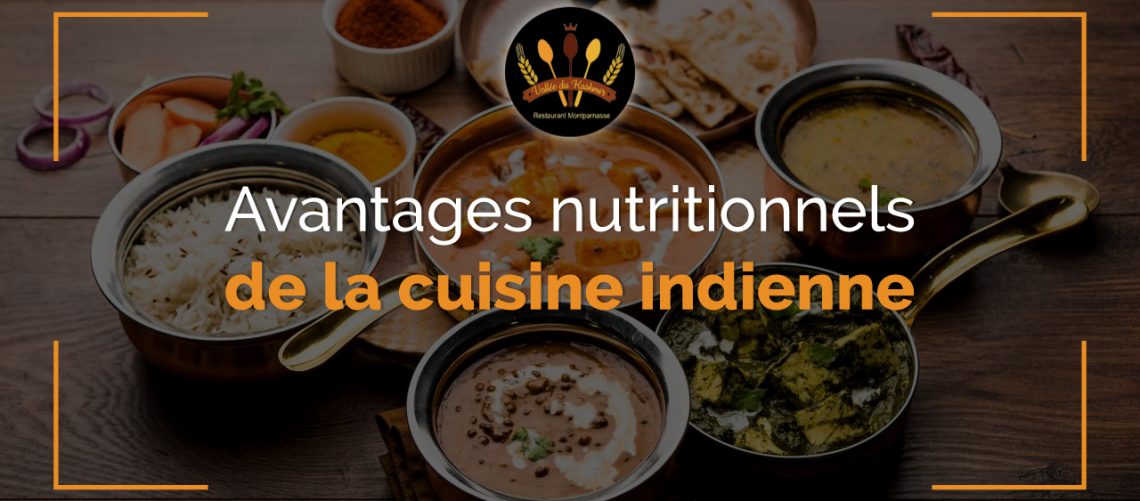
Avantages nutritionnels de la cuisine indienne
Indian recipes often contain a variety of whole grains, legumes, vegetables and spices which provide a wealth of nutrients to the body. Fresh herbs and spices, such as turmeric, ginger, and cinnamon, are also commonly used, adding flavor and nutrition.
In this article, we’ll dive into the nutritional benefits of Indian cuisine from some of the healthiest Indian foods and recipes.
protein
Indian cuisine offers a variety of protein-rich options that can be incorporated into your diet. Protein is an essential nutrient that plays a crucial role in building and repairing healthy tissues in the body. Eating the right amount of protein can help support your immune system by promoting cell growth and regeneration. Proper intake can also lead to feelings of fullness, which aids in weight management.
Some of the most commonly used protein sources in Indian cooking include:
- Meat and poultry: Chicken, lamb, goat and fish. They are usually cooked with various spices and enjoyed in dishes such as butter chicken, tandoori chicken, and fish curry.
- Eggs: Often used in omelet masala, egg bhurji (scrambled) and egg curry.
- Dairy products: Milk, yogurt and cheese are commonly used in Indian cooking. Paneer, a type of Indian cheese, is particularly popular for vegetarian dishes.
- Nuts and seeds: Almonds, cashews, peanuts, and sesame seeds are commonly used in curries, chutneys, or desserts.
Whole Grains
Whole grains are an essential part of Indian cuisine, with a rich history dating back thousands of years. They are also an essential part of a healthy and balanced diet, and Indian cuisine is rich in variety. Unlike refined grains, whole grains include the whole grain, which makes them more nutritious.
Some common whole grains used in Indian cooking include whole wheat, millet, sorghum, and rice. They can usually appear in roti, dosa, idli or biryani. These options are packed with fiber, B vitamins and minerals and can help maintain energy and aid digestion. Experiment with different whole grains to add variety to your meals and reap the benefits.
vegetables
Most Indian dishes include a variety of vegetables, such as spinach, cauliflower, eggplant, and peppers. Many of them were not originally cultivated in India but were introduced to India by Portuguese or British settlers. However, they have become an integral part of Indian cuisine and garnish many dishes. In fact, many Indians practice a strict vegetarian diet, and it is very easy to do so with the variety of curries and vegetarian dishes in Indian cuisine.
With the colorful and tasty range of vegetables, you can easily incorporate them into a healthy meal. Vegetables help boost immunity throughout the body, support gut health, and reduce the risk of disease. Vegetables also provide fiber and essential vitamins, another key aspect of overall health.
Yogurt
Yogurt has been a staple of Indian cuisine for centuries and has been used as a cooling agent to balance out the heat from the spices. In fact, it is one of the oldest fermented foods in the world, with evidence of its consumption dating back to ancient Indian texts.
In Indian cuisine, yogurt (also called « curd ») is commonly used as a base for chaat dishes, sauces and marinades, as well as a side dish to accompany spicy meals. Raita, a yogurt-based side dish, is a popular accompaniment to biryanis and other rice dishes. Along with its cooling properties, yogurt also adds a tart flavor and creamy texture to dishes, making it a versatile ingredient.
If you want to try these dishes and tickle your taste buds, then enter Kashmir Valley . We are the best Indian restaurant in Pars offering a variety of vegetarian and non-vegetarian starters, main courses, sides, roti/bread, drinks and desserts for the sweet tooth. We proudly serve the most popular Indian dishes at economical rates.
